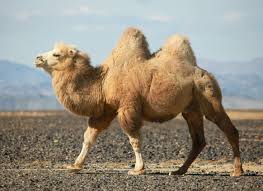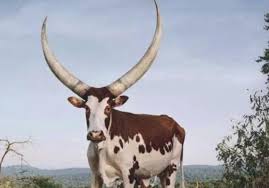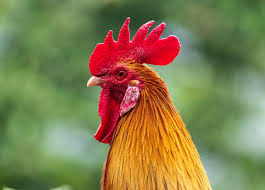Sodium Selenite & Vitamin E Injection
Name:
Sodium Selenite & Vitamin E Injection (or similar product name like “SELENIUM E INJECTION”)
Common Capacity:
50ml, 100ml, 250ml, 500ml [Concentration will vary, e.g., 100mg/ml Vitamin E and 0.5mg/ml Selenium]
Applicable Animals:
Global Livestock Application:
- Cattle: Calves, replacement heifers, breeding cows, feedlot cattle (Beef & Dairy)
- Sheep: Lambs, ewes, rams
- Goats: Kids, does, bucks
- Pigs: Piglets, growing pigs, breeding sows, boars
- Poultry: Chicks, growers, layers, breeders (less common for individual injection in large flocks, more for prevention in feed/water)
- Horses: Foals, yearlings, adult horses (performance, breeding)
- Alpacas, Llamas, Deer, Elk (special farming, where selenium/vitamin E deficiencies are common)
Usage and Dosage:
Administer by Intramuscular (IM) or Subcutaneous (SC) injection, depending on the specific product instructions. Dosages are typically based on body weight and the severity of deficiency.
- Cattle:
- Calves: 0.5 – 1.0 ml per 50 kg body weight. Repeat as necessary, typically every 2-4 weeks in deficiency areas.
- Adult Cattle: 1.0 – 2.0 ml per 100 kg body weight.
- Pregnant Cows: May be given 2-4 weeks pre-calving to improve calf vitality and prevent white muscle disease.
- Note: Do not exceed 2.0 ml per site for small calves, 5.0 ml for larger calves, and 10.0 ml for adult cattle.
- Sheep & Goats:
- Lambs/Kids: 0.25 – 0.5 ml per 10 kg body weight.
- Adult Sheep/Goats: 0.5 – 1.0 ml per 50 kg body weight.
- Pregnant Ewes/Does: May be given 2-4 weeks pre-lambing/kidding.
- Pigs:
- Newborn Piglets: 0.1 – 0.2 ml per piglet (often given within 1-3 days of birth).
- Growing Pigs: 0.5 – 1.0 ml per 25 kg body weight.
- Sows: 2.0 – 4.0 ml per head, particularly during gestation or lactation.
- Horses:
- Foals: 0.5 – 1.0 ml per 50 kg body weight.
- Adult Horses: 1.0 – 2.0 ml per 100 kg body weight. Given cautiously, consult veterinarian due to narrow safety margin for selenium in horses.
Dosage frequency depends on the selenium and vitamin E status of the animals, feed analysis, and local deficiency patterns. Consult a veterinarian for specific recommendations.
Applicable Diseases and Symptoms:
This product is primarily used to prevent and treat symptoms associated with deficiencies of Selenium and/or Vitamin E. These nutrients are vital antioxidants and play crucial roles in immune function, muscle health, and reproductive performance.
- White Muscle Disease (Nutritional Myopathy/Degeneration):
- Symptoms: Stiff gait, weakness, reluctance to move, dyspnea (difficulty breathing), sudden death in young rapidly growing animals (calves, lambs, kids, piglets) due to degeneration of skeletal and cardiac muscle.
- Reproductive Disorders:
- Symptoms: Increased incidence of retained placenta, repeat breeding, metritis in cows; reduced fertility, poor conception rates, embryonic death in various species; poor semen quality in males.
- Immune Dysfunction:
- Symptoms: Increased susceptibility to infections (e.g., scours, pneumonia in calves, mastitis in dairy cows), poor response to vaccinations.
- Poor Growth and Performance:
- Symptoms: Reduced feed efficiency, slow growth rates, general unthriftiness in deficient animals.
- Exudative Diathesis (Poultry):
- Symptoms: Edema (swelling) of the head, breast, and ventral body, hemorrhage, ascites.
- Mulberry Heart Disease (Pigs):
- Symptoms: Sudden death in rapidly growing pigs, often associated with myocardial degeneration and heart failure.
- Liver Necrosis (Pigs):
- Symptoms: Sudden death, severe liver damage.
Precautions:
- Accurate Diagnosis: Use only when selenium and/or vitamin E deficiency is diagnosed or suspected. Over-supplementation of selenium can be toxic.
- Selenium Toxicity: Selenium has a narrow margin of safety. Overdosing can lead to acute or chronic selenium poisoning, characterized by lameness, hoof deformities, hair loss, and eventual death. Do not exceed recommended dosage.
- Injection Site: Administer by proper routes (IM/SC) as specified. Use aseptic techniques to avoid infection at the injection site. Change needles frequently.
- Shake Well: Ensure the solution is thoroughly mixed before use, especially if it contains suspended particles (though clear solutions should be homogenous).
- Withdrawal Period: Observe the specified withdrawal periods for meat and milk to prevent drug residues in food products. These can vary depending on jurisdiction and product concentration.
- Storage: Store in a cool, dry place, protected from light. Do not freeze. Keep out of reach of children.
- Human Safety: Avoid accidental self-injection. If accidental injection occurs, seek medical advice immediately and show the package leaflet or the label to the physician.
Contraindications:
- Do not administer to animals already receiving adequate dietary selenium or vitamin E supplementation, or to animals known to have high selenium status (e.g., in selenium-rich areas), as this may lead to toxicity.
- Do not administer to animals hypersensitive to any of the ingredients.
- Do not use in animals exhibiting signs of selenium toxicity.
- Not intended for use in animals producing milk or eggs for human consumption during certain periods, depending on the product’s withdrawal period. Always check the specific product label.
Post-Treatment Care:
- Monitor Animals: Observe treated animals for signs of improvement or any adverse reactions (e.g., injection site reactions, signs of selenium toxicity).
- Nutritional Assessment: Regularly assess the nutritional status of the herd/flock, including feed analysis for selenium and vitamin E levels, especially in known deficiency areas.
- Integrated Approach: Integrate selenium and vitamin E supplementation into a broader herd health and nutrition program. This may include reviewing feed formulations, pasture management, and soil testing.
- Follow-up: In severe deficiency cases or for ongoing prevention, follow-up injections or dietary supplementation may be necessary as part of a veterinarian-recommended program.
- Record Keeping: Maintain accurate records of treatments, dosages, and animal responses.
Applicable Animals
Animal species suitable for this veterinary medication


